Bringing this goal to life called for a different architectural approach that removes the limitations of traditional single-workflow video conferencing systems – one with the flexibility to adapt to different workflows as users move from one task to another.
The development of a completely new user-centric platform has provided us the freedom to rethink traditional strategies for scalability, interoperability, security and information sharing– resulting in significant technical benefits for deployment and support.
Aerus is a natural evolution of our platform to the cloud in delivering video interactions to the enterprise as a service, with all the capabilities necessary to fulfill the promise of new modes for productivity at lower cost.
Aerus Service Delivery Platform
Layered service delivery
Distributed server architecture
Flexible cloud deployment modes
Video stream switching
High quality visual conversations
Scalable video coding
Interoperability library
Codec-agnostic media processing
The Aerus SDP uses a distributed client-server architecture that operates on non-proprietary hardware. There are two types of applications that enable Aerus service delivery:
The Aerus client SDK provides users with a range of multi-platform clients – for use with access appliances from mobile to dedicated purpose-built rooms – all with a common natural user interface for access to the onramp service layer.
The Aerus Service Delivery Platform (SDP) brings together the benefits of distributed networking and cloud computing to deliver services for high quality video interactions that support any workflow.
The Aerus SDP uses a two layered approach for service delivery:

The Aerus Service Delivery Platform uses an approach for transporting media streams called video stream switching, which is instrumental in supporting two key functions of the Aerus Media Engine found inside every Aerus client:

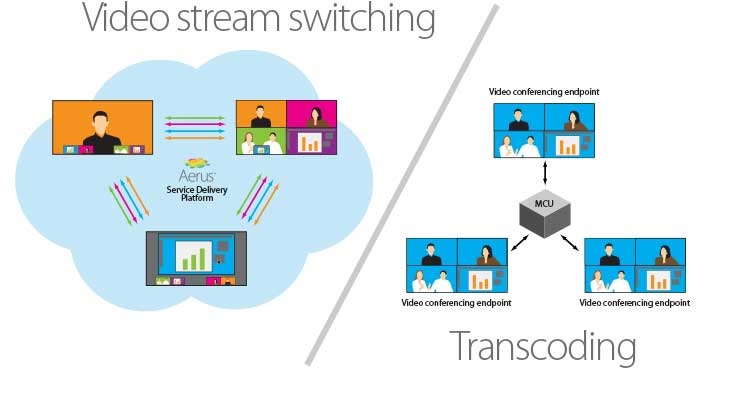
Video stream switching is an advanced technology used by the Aerus Service Delivery Platform that allows multiple media streams to be switched between Aerus clients at once without being processed from one format to another format (transcoding). This approach differs from video conferencing techniques where video endpoints send and receive one video stream to and from a transcoding multipoint control unit (MCU).
As the number of users increases in a deployment, video stream switching enables Aerus to remove cost and performance limitations of centralized, hardware-based video conferencing approaches. Aerus clients send only one stream for each item of media, even if there are multiple recipients. Streams are multi-casted by Aerus onramp access servers, as needed, with Application Layer Multicasting (ALM). This approach not only protects network resources as the frequency of video interactions increases with more users – it also provides intelligent bandwidth management in multipoint sessions.

The Aerus Media Engine (AME) is a central component within the Aerus client and is responsible for enabling two key functions:
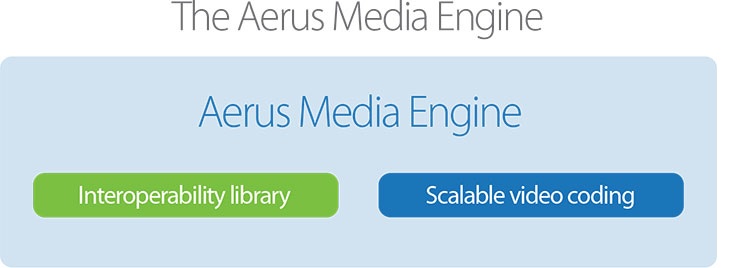
The AMEs unique approach to scalable video coding leverages video stream switching to adapt to changing conditions throughout a session to ensure that users always have a sharp visual experience while minimizing bandwidth use.
The AME processes each media stream once and spans a wide spectrum of decoding profiles from high quality 1080p at 30 frames per second from 2Mb/s of bandwidth to 270p at 3 frames per second using less than 15Kb/s.

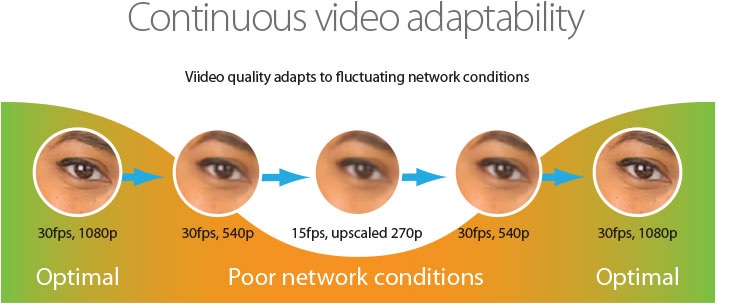
The Aerus Media Engine’s scalable video process delivers users:
1. An exceptional visual experience with high-quality video and shared collaborative information
The AME can scale visual media up and down dynamically from high quality/high frame rate down to minimum quality/low frame rate, using more or less bandwidth respectively. This enables each Aerus client to adapt continuously in real-time to changes in network conditions, bandwidth availability and device type. This process ensures that all media streams stay as vibrant as possible for users at all times.
2. Quick access to new video encoding innovation
Each user has the ability to adapt the context of their on-screen session media streams without affecting anyone else’s view of the same session. As media streams are enlarged or minimized on-the-fly by users, the media format and corresponding bitrate is adapted to maximize bandwidth efficiency.
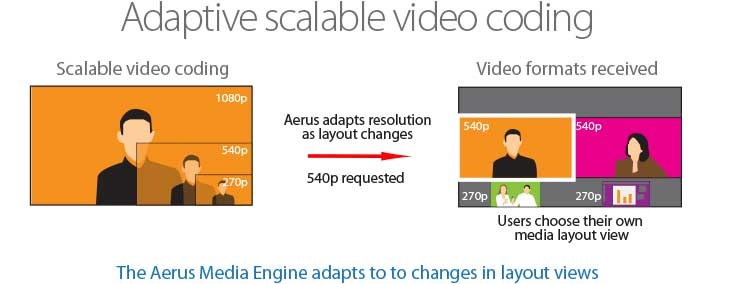
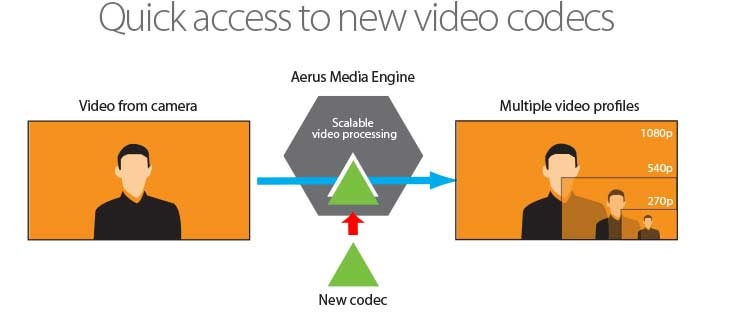
3. Real-time layout context control
The AME is codec-agnostic to media processing, meaning our approach to scalable coding for video stream switching can be applied to any video codec, for any active media stream. Today between Aerus clients, the AME leverages the high efficiency H.264 AVC High Profile video codec.
This approach to media processing allows the AME to utilize any new software codec as it is released to the market, apply scalability to it, and pass on the innovation to Aerus users as an update for improved experience.